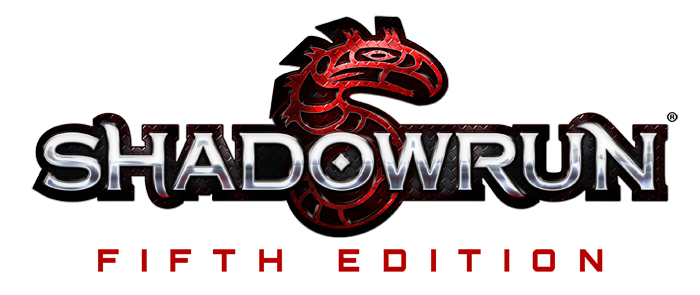Not too long ago we released the first preview of Shadowrun, Fifth Edition, which contained fiction and flavor text to help provide a preview of the look and feel of the text. We’re moving a second preview toward the launching pad, and this one will provide more rules content. We plan on sharing a big load of the Game Concepts chapter, laying out the basic framework of the game, including tests, limits, attributes, uses of Edge, and so on. So keep watching www.shadowruntabletop.com for the link to the preview!
Pages
- About
- Blog
- Books
- Catalyst Game Labs
- Downloads / Media
- Game Resources
- Home Page
- Ares 1
- Ares 2
- Ares 3
- Ares 4
- Ares 5
- Ares 6
- Bogota 1
- Bogota 10
- Bogota 11
- Bogota 12
- Bogota 13
- Bogota 15
- Bogota 2
- Bogota 3
- Bogota 4
- Bogota 6
- Bogota 7
- Bogota 8
- Commcode
- Cracks 1
- Cracks 2
- Cracks 3
- Cracks 4
- Cracks 5
- Dragon 12
- Dragon 15
- Dragon 17
- Dragon 22
- Dragon 25
- Dragon 29
- Dragon 3
- Dragon 5
- Dragon 8
- Eye of the Hurricane 1
- Eye of the Hurricane 2
- Eye of the Hurricane 3
- Eye of the Hurricane 4
- Eye of the Hurricane 5
- Eye of the Hurricane 6
- Eye of the Hurricane 7
- Eye of the Hurricane 8
- Fractures 1
- Fractures 2
- Fractures 3
- Fractures 4
- Fractures 5
- Fractures 6
- Fractures 7
- Fractures 8
- Little Birdie 1
- Little Birdie 2
- Princes 1
- Princes 2
- Princes 3
- Princes 4
- Princes 5
- Princes 6
- Princes 7
- Princes 8
- Pulling The Trigger 1
- Pulling The Trigger 10
- Pulling The Trigger 11
- Pulling The Trigger 12
- Pulling The Trigger 13
- Pulling The Trigger 13
- Pulling The Trigger 14
- Pulling The Trigger 15
- Pulling The Trigger 16
- Pulling The Trigger 2
- Pulling The Trigger 4
- Pulling The Trigger 6
- Pulling The Trigger 7
- Pulling The Trigger 8
- Redmond
- Sleeping With The Enemy 1
- Sleeping With The Enemy 10
- Sleeping With The Enemy 2
- Sleeping With The Enemy 3
- Sleeping With The Enemy 4
- Sleeping With The Enemy 5
- Sleeping With The Enemy 6
- Sleeping With The Enemy 7
- Sleeping With The Enemy 8
- Sleeping With The Enemy 9
- Stats
- Storm Front
- The Artful Dodger 1
- The Artful Dodger 2
- The Artful Dodger 3
- The Artful Dodger 4
- The Artful Dodger 5
- The First and Last
- Legal
- LEGENDS (E-PUB FICTION)
- Links
- Missions
- Products Page
- Shadow Fiction
- Shadow Images
- Shadowrun: Crossfire
Categories
Archives
- August 2022
- September 2020
- June 2020
- May 2020
- March 2020
- January 2020
- December 2019
- July 2019
- June 2019
- May 2019
- April 2019
- March 2019
- February 2019
- January 2019
- November 2018
- October 2018
- July 2018
- June 2018
- May 2018
- March 2018
- January 2018
- December 2017
- November 2017
- September 2017
- August 2017
- July 2017
- May 2017
- April 2017
- March 2017
- December 2016
- November 2016
- October 2016
- September 2016
- August 2016
- July 2016
- June 2016
- May 2016
- April 2016
- March 2016
- February 2016
- January 2016
- December 2015
- October 2015
- September 2015
- June 2015
- May 2015
- April 2015
- March 2015
- February 2015
- January 2015
- December 2014
- November 2014
- October 2014
- September 2014
- August 2014
- July 2014
- June 2014
- May 2014
- April 2014
- March 2014
- February 2014
- January 2014
- December 2013
- November 2013
- October 2013
- September 2013
- August 2013
- July 2013
- June 2013
- May 2013
- April 2013
- March 2013
- February 2013
- January 2013






